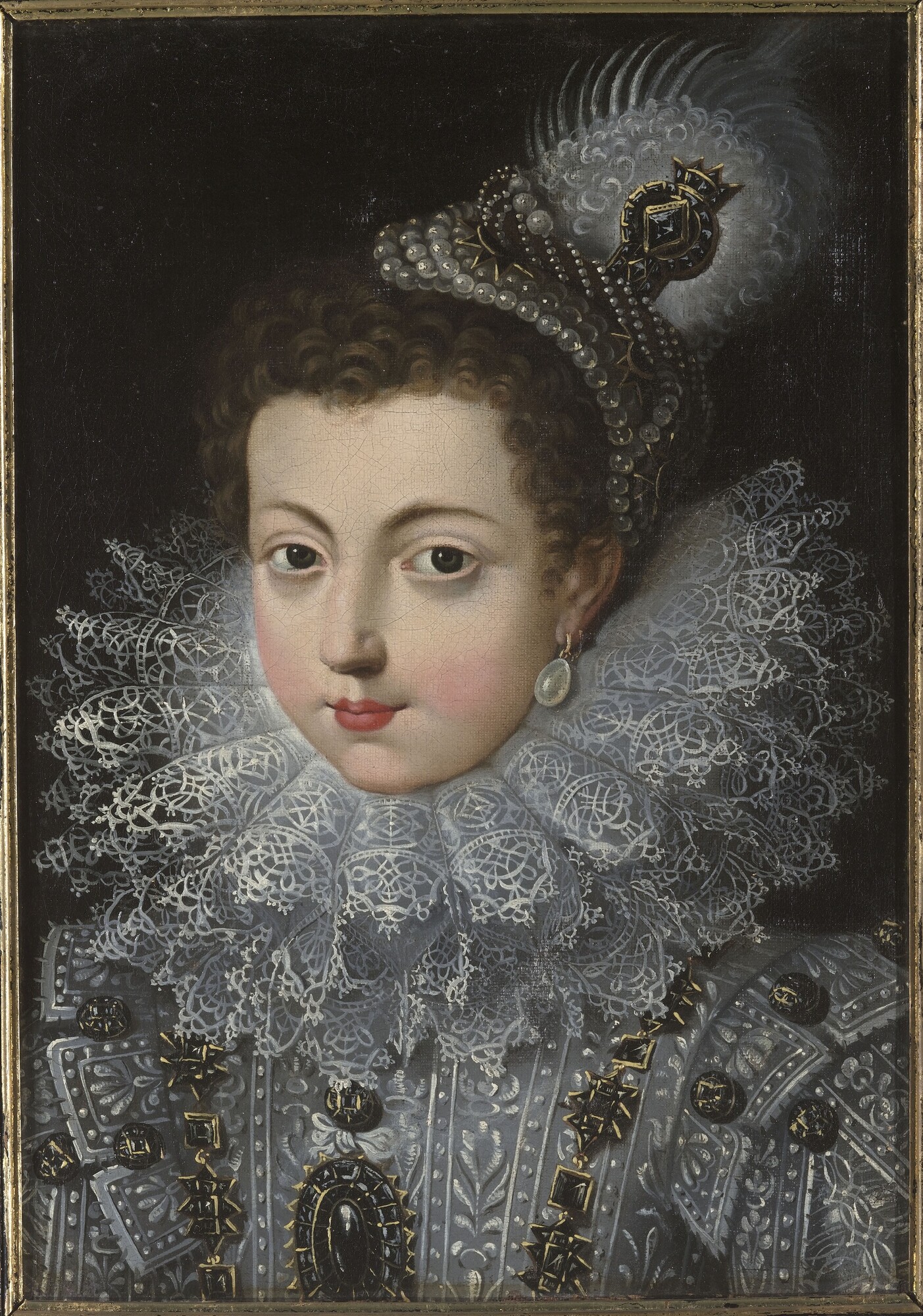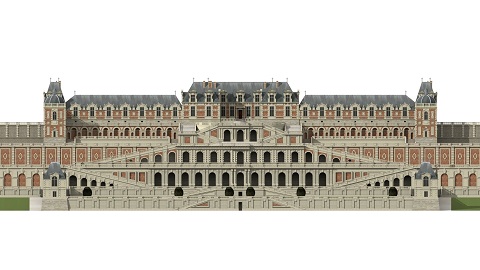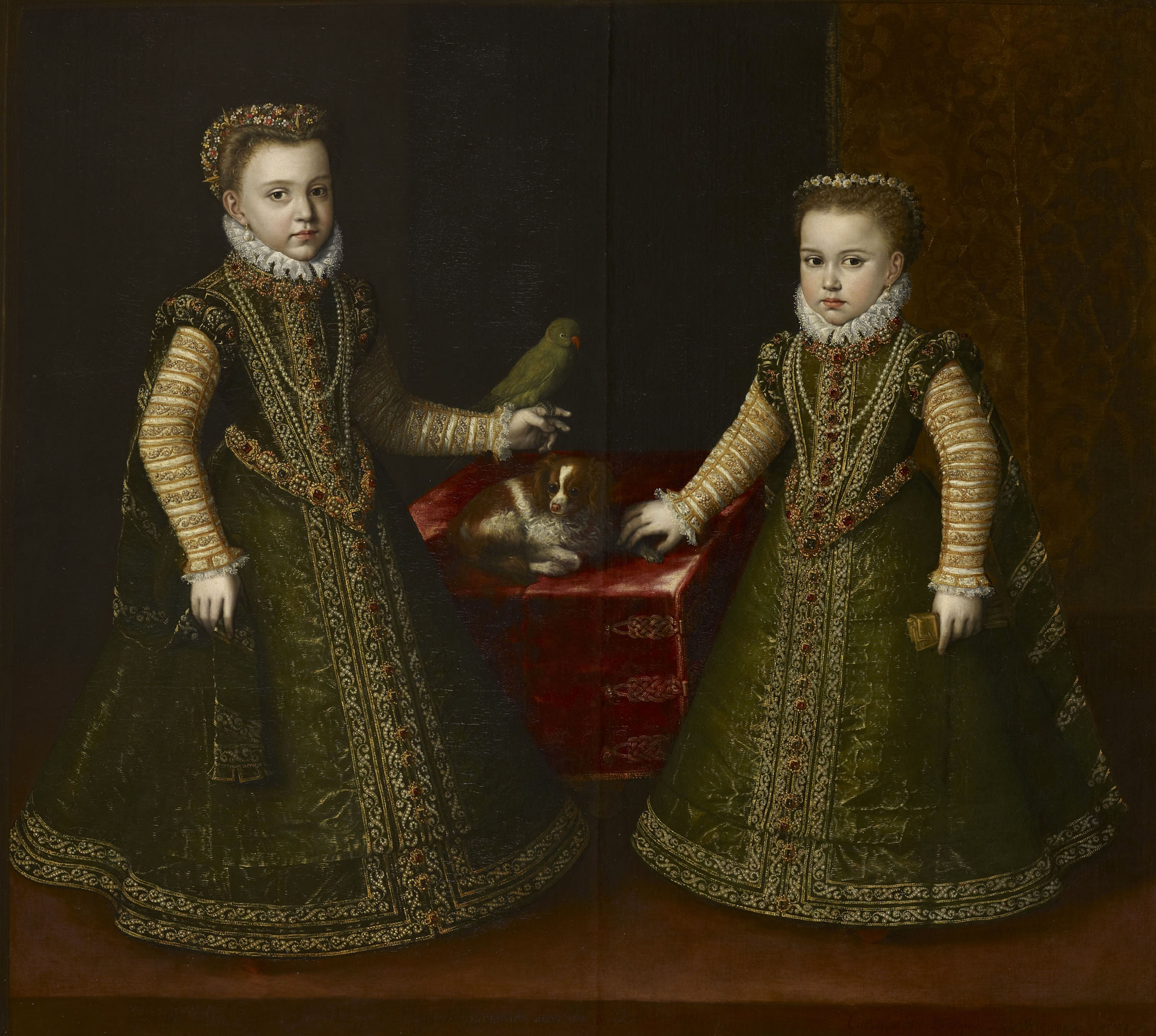|
Elisabeth Of France (1602–1644)
Elisabeth of France or Isabella of Bourbon (22 November 1602 – 6 October 1644) was Queen of Spain from 1621 to her death and Queen of Portugal from 1621 to 1640, as the first spouse of King Philip IV & III. She served as regent of Spain during the Catalan Revolt in 1640-42 and 1643–44.Diccionario Biográfico. Real Academia de la Historia ''Isabel de Borbón'' Life Childhood  Elisabeth, ''Madame Royale'', was born at the
Elisabeth, ''Madame Royale'', was born at the
|
Diego Velázquez
Diego Rodríguez de Silva y Velázquez (baptized June 6, 1599August 6, 1660) was a Spanish painter, the leading artist in the court of King Philip IV of Spain and Portugal, and of the Spanish Golden Age. He was an individualistic artist of the Baroque period (c.1600–1750). He began to paint in a precise tenebrist style, later developing a freer manner characterized by bold brushwork. In addition to numerous renditions of scenes of historical and cultural significance, he painted scores of portraits of the Spanish royal family and commoners, culminating in his masterpiece ''Las Meninas'' (1656). Velázquez's paintings became a model for 19th-century realist and impressionist painters. In the 20th century, artists such as Pablo Picasso, Salvador Dalí, and Francis Bacon paid tribute to Velázquez by re-interpreting some of his most iconic images. Most of his work entered the Spanish royal collection, and by far the best collection is in the Museo del Prado in Madrid, thoug ... [...More Info...] [...Related Items...] OR: [Wikipedia] [Google] [Baidu] |
Philip IV & III
Philip IV ( es, Felipe, pt, Filipe; 8 April 160517 September 1665), also called the Planet King (Spanish: ''Rey Planeta''), was King of Spain from 1621 to his death and (as Philip III) King of Portugal from 1621 to 1640. Philip is remembered for his patronage of the arts, including such artists as Diego Velázquez, and his rule over Spain during the Thirty Years' War. By the time of his death, the Spanish Empire had reached approximately 12.2 million square kilometers (4.7 million square miles) in area but in other aspects was in decline, a process to which Philip contributed with his inability to achieve successful domestic and military reform. Personal life Philip IV was born in the Royal Palace of Valladolid, and was the eldest son of Philip III and his wife, Margaret of Austria. In 1615, at the age of 10, Philip was married to 13-year-old Elisabeth of France. Although the relationship does not appear to have been close, some have suggested that Olivares, ... [...More Info...] [...Related Items...] OR: [Wikipedia] [Google] [Baidu] |
Gaston, Duke Of Orléans
'' Monsieur'' Gaston, Duke of Orléans (Gaston Jean Baptiste; 24 April 1608 – 2 February 1660), was the third son of King Henry IV of France and his second wife, Marie de' Medici. As a son of the king, he was born a '' Fils de France''. He later acquired the title Duke of Orléans, by which he was generally known during his adulthood. As the eldest surviving brother of King Louis XIII, he was known at court by the traditional honorific Monsieur. Early life Gaston Jean Baptiste was born at the Palace of Fontainebleau on 24 April 1608 and at birth was given the title of Duke of Anjou. As a child, he was raised under the supervision of the royal governess Françoise de Montglat. In 1626, at the time of his marriage to the young Marie de Bourbon, Duchess of Montpensier, he received in appanage (with their respective titles) the duchies of Orléans and Chartres, and the county of Blois. He had nominal command of the army which besieged La Rochelle in 1628, having already entered ... [...More Info...] [...Related Items...] OR: [Wikipedia] [Google] [Baidu] |
Nicholas Henri, Duke Of Orléans
Nicholas is a male given name and a surname. The Eastern Orthodox Church, the Roman Catholic Church, and the Anglican Churches celebrate Saint Nicholas every year on December 6, which is the name day for "Nicholas". In Greece, the name and its derivatives are especially popular in maritime regions, as St. Nicholas is considered the protector saint of seafarers. Origins The name is derived from the Greek name Νικόλαος (''Nikolaos''), understood to mean 'victory of the people', being a compound of νίκη ''nikē'' 'victory' and λαός ''laos'' 'people'.. An ancient paretymology of the latter is that originates from λᾶς ''las'' ( contracted form of λᾶας ''laas'') meaning 'stone' or 'rock', as in Greek mythology, Deucalion and Pyrrha recreated the people after they had vanished in a catastrophic deluge, by throwing stones behind their shoulders while they kept marching on. The name became popular through Saint Nicholas, Bishop of Myra in Lycia, the inspirati ... [...More Info...] [...Related Items...] OR: [Wikipedia] [Google] [Baidu] |
Christine Marie Of France
Christine of France (10 February 1606 – 27 December 1663) was the sister of Louis XIII and Duchess of Savoy by marriage. Upon the death of her husband Victor Amadeus I in 1637, she acted as regent of Savoy between 1637 and 1648. Daughter of France Born in the Palais du Louvre in Paris, Christine was the third child and second daughter of King Henry IV of France and his second wife Marie de' Medici. As a daughter of the king, she was a Daughter of France. She was a younger sister of Louis XIII of France and Elisabeth of France and an older sister of Nicholas Henri, Duke of Orléans, Gaston, Duke of Orléans and Henrietta Maria of France. Christine was a sister-in-law of Philip IV of Spain through Elisabeth and of Charles I of England through Henrietta Maria. As a child, she was raised under the supervision of the royal governess Françoise de Montglat. After the marriage of her older sister Elisabeth in 1615 to the future Philip IV of Spain, Christine took on the honorary ti ... [...More Info...] [...Related Items...] OR: [Wikipedia] [Google] [Baidu] |
Château De Saint-Germain-en-Laye
The Château de Saint-Germain-en-Laye () is a former royal palace in the commune of Saint-Germain-en-Laye, in the ''département'' of Yvelines, about 19 km west of Paris, France. Today, it houses the ''musée d'Archéologie nationale'' (National Museum of Archaeology). History 12th–13th centuries The first castle, named the ''Grand Châtelet'', was built on the site by Louis VI in 1124. The castle was expanded by Louis IX in the 1230s. Louis IX's chapelle Saint Louis at the castle belongs to the Rayonnant phase of French Gothic architecture. A 1238 charter of Louis IX instituting a regular religious service at the chapel is the first mention of a chapel having been built at the royal castle. This was a ''Sainte Chapelle'', to house a relic of the Crown of Thorns or the True Cross. Its plan and architecture prefigure the major Sainte-Chapelle which Saint Louis built within the Palais de la Cité at Paris between 1240 and 1248. Both buildings were built by Louis's fa ... [...More Info...] [...Related Items...] OR: [Wikipedia] [Google] [Baidu] |
Françoise De Montglat
Françoise de Montglat ''née de Longuejoue'' (d. 1633) was a French court official. She was the royal governess of King Louis XIII of France and his siblings. Françoise de Montglat was the daughter of Thibaut de Longuejoue and Madeleine Briçonnet. She married Robert de Harlay (1550-1607), Baron de Montglat and royal chamberlain, in 1579. She was appointed royal governess to the children of King Henry IV of France. She was given the responsibility for the king's children with Queen Maria of Medici, as well as for the children of the king with his mistresses, who were raised together. She was referred to as "Mamangat" by her royal charges, who corresponded with her as adults. Her daughter Jeanne de Harlay (later Jeanne de Saint George) became a playmate and sub-governess of the royal children, who called her "Mamie", and was later lady-in-waiting and correspondent to Henrietta Maria and, finally, appointed governess to Anne Marie Louise d'Orléans, Duchess of Montpensier Ann ... [...More Info...] [...Related Items...] OR: [Wikipedia] [Google] [Baidu] |
Madame Royale
''Madame Royale'' ({{IPA-fr, madam ʁwajal, ''Royal Lady'') was a style customarily used for the eldest living unmarried daughter of a reigning French monarch. It was similar to the style '' Monsieur'', which was typically used by the King's second son. Just as Gaston, duc d'Orléans (1608–1660), the second son of King Henry IV of France (1553–1610), was known as '' Monsieur'', Élisabeth de Bourbon (1602–1644), the eldest daughter of Henry, was known before her marriage to King Philip IV of Spain (1605–1665) as ''Madame Royale''. After her death, the title was borne by her younger sister, Christine de Bourbon (1606–1663), until her marriage to Victor Amadeus I, Duke of Savoy (1587–1637). The most famous holder of this honorific was King Louis XVI of France's eldest daughter, Marie-Thérèse-Charlotte (1778–1851), the only one of his immediate family to survive the French Revolution. She later married her cousin, Louis-Antoine, duc d'Angoulême (1775–1844), a ... [...More Info...] [...Related Items...] OR: [Wikipedia] [Google] [Baidu] |
Honorific
An honorific is a title that conveys esteem, courtesy, or respect for position or rank when used in addressing or referring to a person. Sometimes, the term "honorific" is used in a more specific sense to refer to an honorary academic title. It is also often conflated with systems of honorific speech in linguistics, which are grammatical or morphological ways of encoding the relative social status of speakers. Honorifics can be used as prefixes or suffixes depending on the appropriate occasion and presentation in accordance with style and customs. Typically, honorifics are used as a style in the grammatical third person, and as a form of address in the second person. Use in the first person, by the honored dignitary, is uncommon or considered very rude and egotistical. Some languages have anti-honorific (''despective'' or ''humilific'') first person forms (expressions such as "your most humble servant" or "this unworthy person") whose effect is to enhance the relative honor a ... [...More Info...] [...Related Items...] OR: [Wikipedia] [Google] [Baidu] |
Fils De France
''Fils de France'' (, ''Son of France'') was the style and rank held by the sons of the kings and dauphins of France. A daughter was known as a fille de France (, ''Daughter of France''). The children of the dauphin (a title reserved for the king's heir apparent whether son, grandson or great-grandson of the monarch) were accorded the same style and status as if they were the king's children instead of his grandchildren or great-grandchildren. Styles The king, queen, queen dowager, ''enfants de France'' (children of France) and ''petits-enfants de France'' (grandchildren of France) constituted the ''famille du roi'' (royal family). More remote legitimate, male-line descendants of France's kings held the designation and rank of '' princes du sang'' (princes of the blood) or, if legally recognised despite a bar sinister on the escutcheon, they were customarily deemed ''princes légitimés'' (legitimated princes). The dauphin, the heir to the French throne, was the most seni ... [...More Info...] [...Related Items...] OR: [Wikipedia] [Google] [Baidu] |
Philip II Of Spain
Philip II) in Spain, while in Portugal and his Italian kingdoms he ruled as Philip I ( pt, Filipe I). (21 May 152713 September 1598), also known as Philip the Prudent ( es, Felipe el Prudente), was King of Spain from 1556, King of Portugal from 1580, and King of Naples and Sicily from 1554 until his death in 1598. He was '' jure uxoris'' King of England and Ireland from his marriage to Queen Mary I in 1554 until her death in 1558. He was also Duke of Milan from 1540. From 1555, he was Lord of the Seventeen Provinces of the Netherlands. The son of Emperor Charles V and Isabella of Portugal, Philip inherited his father's Spanish Empire in 1556 and succeeded to the Portuguese throne in 1580 following a dynastic crisis. The Spanish conquests of the Inca Empire and of the Philippines, named in his honor by Ruy López de Villalobos, were completed during his reign. Under Philip II, Spain reached the height of its influence and power, sometimes called the Spanish Golden Age, and r ... [...More Info...] [...Related Items...] OR: [Wikipedia] [Google] [Baidu] |
Catalina Micaela Of Spain
Catherine Michaela of Spain (; 10 October 1567 – 6 November 1597) was Duchess of Savoy by marriage to Duke Charles Emmanuel I. She ruled the Duchy several times as regent in Charles Emmanuel's absence, notably during his campaign in 1594.Dizionario Biografico degli Italiani – Volume 22 (1979) She was the younger surviving daughter of Philip II of Spain and Elisabeth of Valois. Early life Catherine Michaela was the daughter of Philip II, ruler of the vast Spanish Empire, and his third wife, the French princess Elisabeth of Valois. She was described as beautiful, intelligent, arrogant and well aware of her high social status. Though her father did not attend her christening and was not as rejoiced at the birth of a daughter as he had been with her elder sister, Isabella Clara Eugenia, she had a good relationship with him. Philip and Catherine Michaela exchanged letters throughout her life. She had a close relationship with her sister. They were raised together under the car ... [...More Info...] [...Related Items...] OR: [Wikipedia] [Google] [Baidu] |





